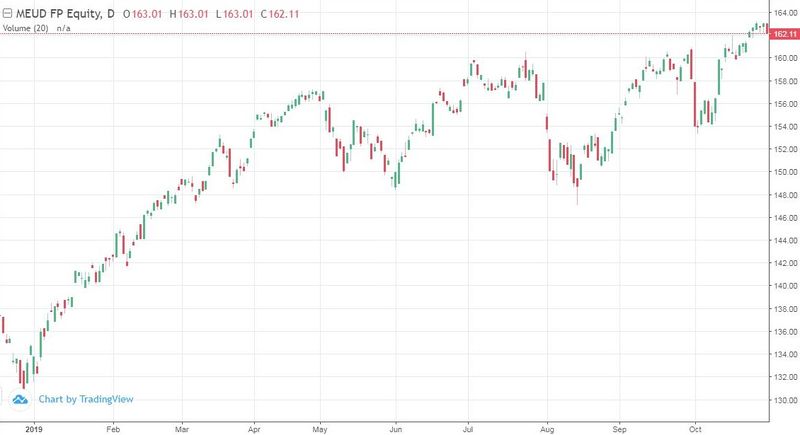
Markets have been heavily politicized under the “Trump era”. US 2020 elections and the implications of potential policy shifts from the White House in preparation for these elections are taking center stage for macro markets and in particular for commodities. FOMC delivered its third 25 bps cut with a more neutral guidance in its final 75 bps mid-cycle adjustment. Precious metals and gold (+5% on the month), in particular, benefited from the move. Easing monetary policy was also adopted in Europe (with the final ‘push’ from Mr. Draghi) and China is continuing its policy around its dovish stance (increasing loosening - Total Social Financing was increased again last month and shows 11% growth YoY) to alleviate the economic slowdown (Caixin China Service PMI again experienced a weak month). Thus, demand for base metals continued to disappoint and reached levels not seen since the financial crisis. The complex has remained relatively stable as supplies have also been an issue (large disruption in copper in Chile and Zambia).
In the petroleum complex, demand has also been weak. Since May, the YoY global oil demand growth has been at its lowest in years (at around 0.5 Mio bbl/day growth). Supply shortfalls (sanctions on Iran and Venezuela oil, drone attack on Saudi wells) have continued and kept the market in balance. A decline in shale oil drilling has also put some surprise on US production. A decline in overall oil inventory is keeping the market in contango but the new IMO regulations are also reducing the ability to store oil on tankers. The rise of freight rates has put oil in the market and lowered the spread momentarily. On natural gas, production has grown significantly, and has also been balanced with cooler weather than expected. Inventories have been building up (seasonally adjusted) and reached close to the seasonal average in October (from a very low inventory in the summer). The market seems to be overly positioned on the short side and a continued cold weather (as forecasted) around mid-November (the seasonal inventory peak) may subject the market to a strong reversal.
The likely peak in tariffs on Chinese exports may bring some relief for some agri-commodities. This is overall bullish for the complex, particularly for soybean. The end of harvest for corn was better than expected but still behind last year’s harvest. For other commodities, demand is weak, particularly ethanol consumption in the US.
Volatility was down for all asset classes in October. The return to a low volatility regime continued for equity, backed by a good start of earnings season, with the VIX down on the month from 16.24% to 13.22% while VSTOXX was down from 15.82% to 13.79%. Same story for precious metals, with the help of the recent FOMC moves, where gold implied volatility down from 13% to 11% for ATM calls and silver implied volatility down from 22% to 20%. A lower volatility as well in the agricultural sector, with easing of trade war tensions, where implied volatility for corn down from 18% to 17% and for soybean from 16% to 12%. Crude implied volatility was also coming off after its small spike in September, down from 38% to 31% for ATM calls, back to pre-September levels.
Author: Four Elements Capital

